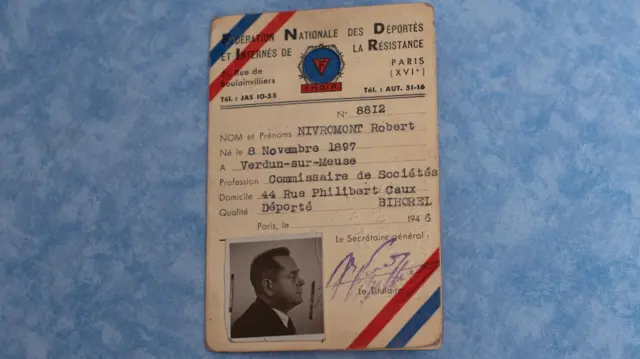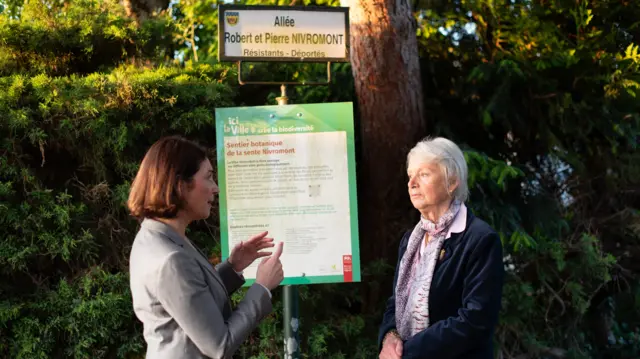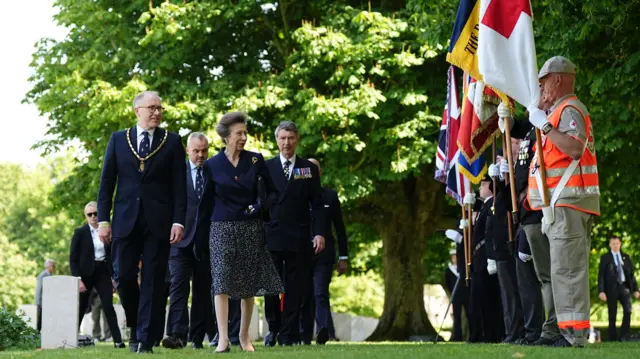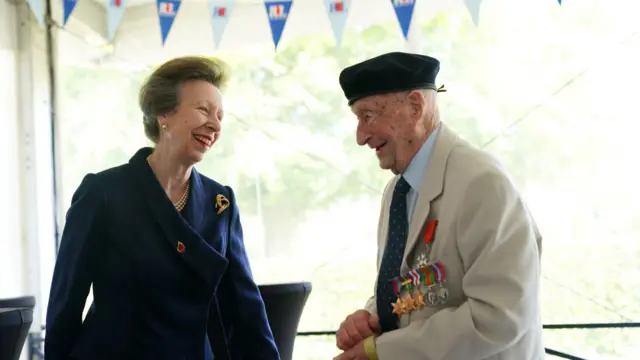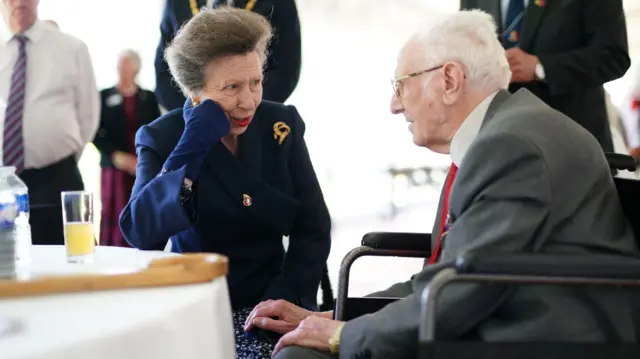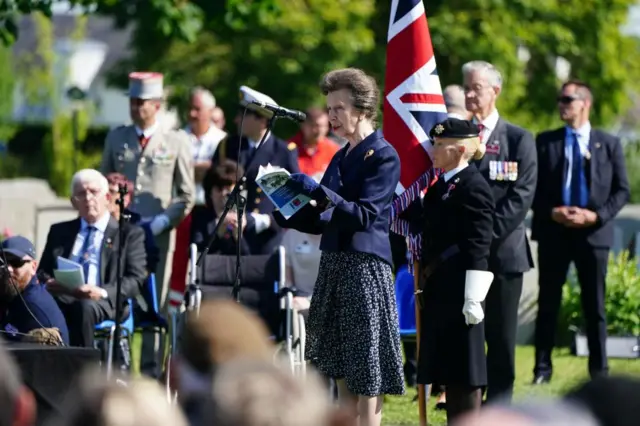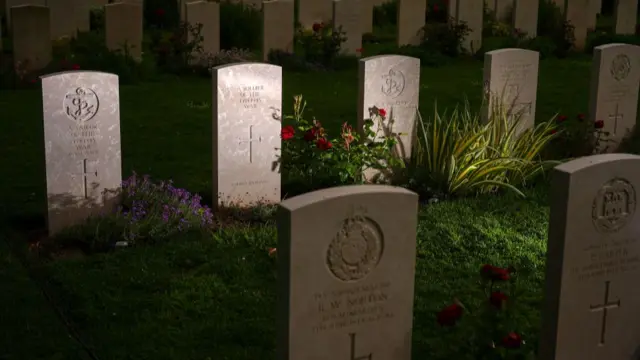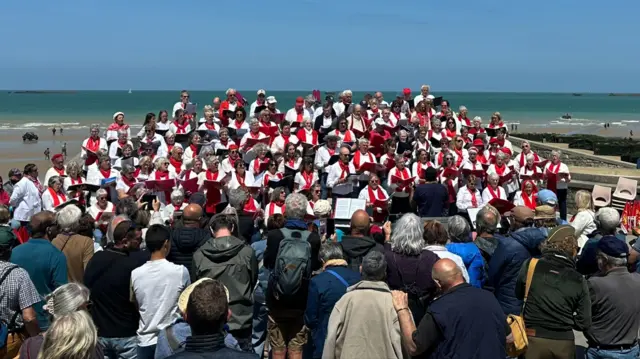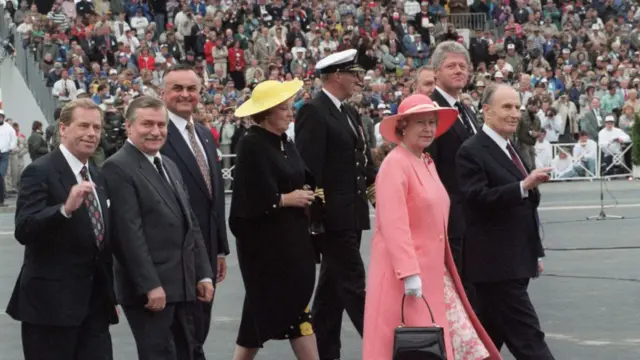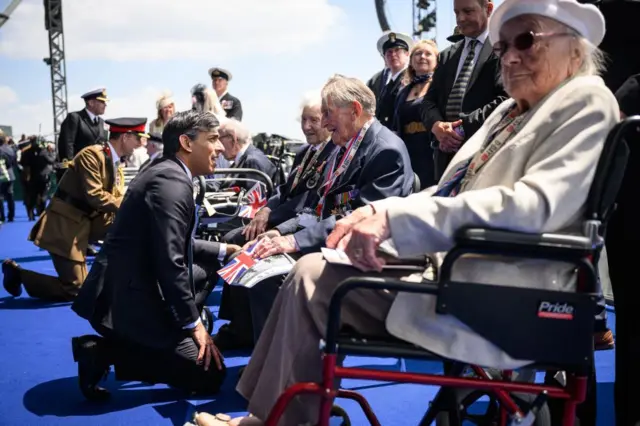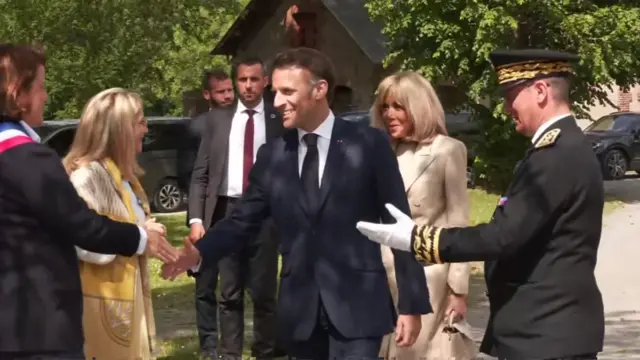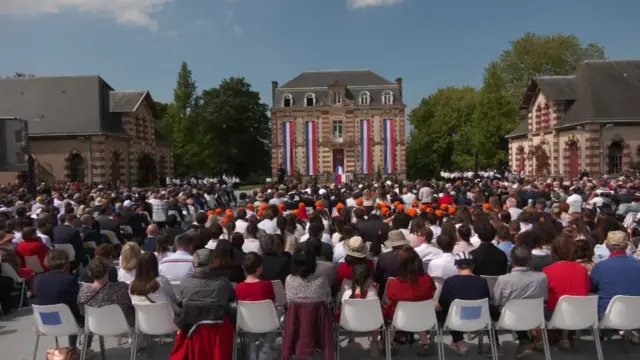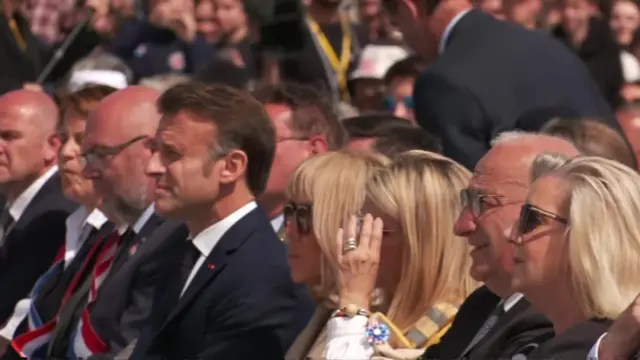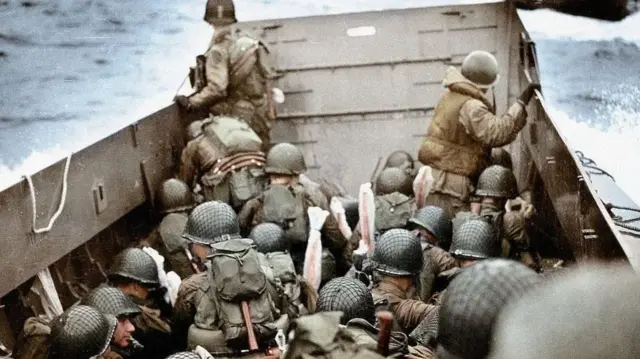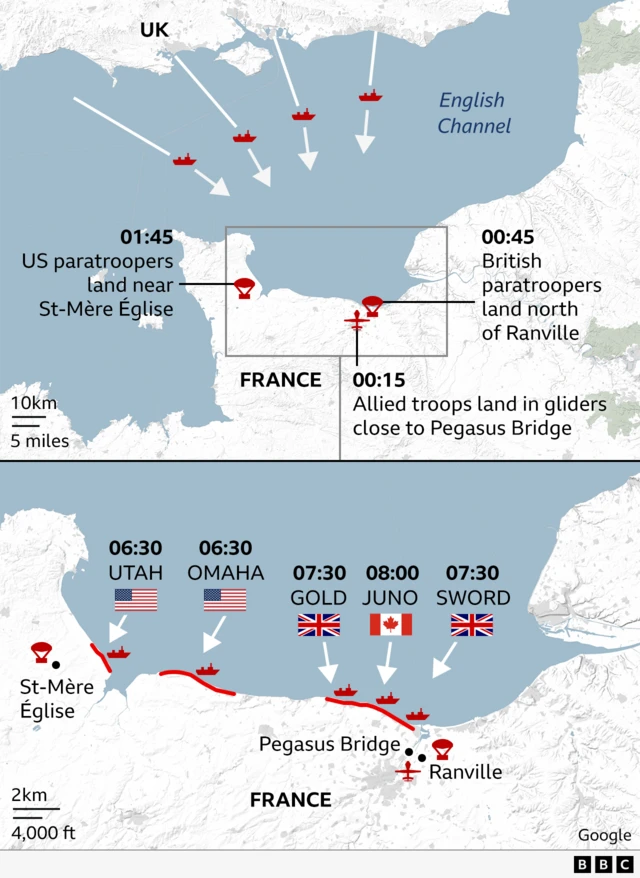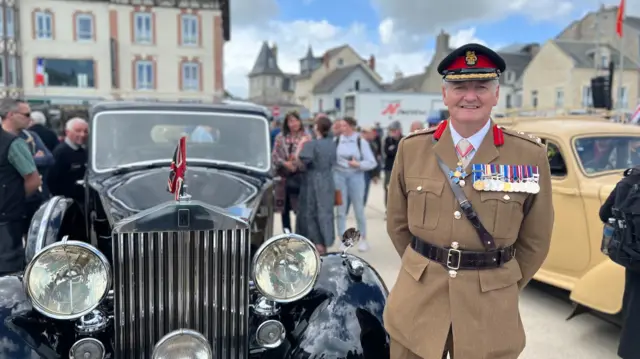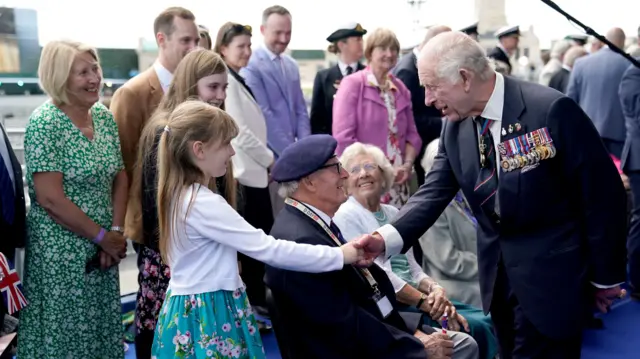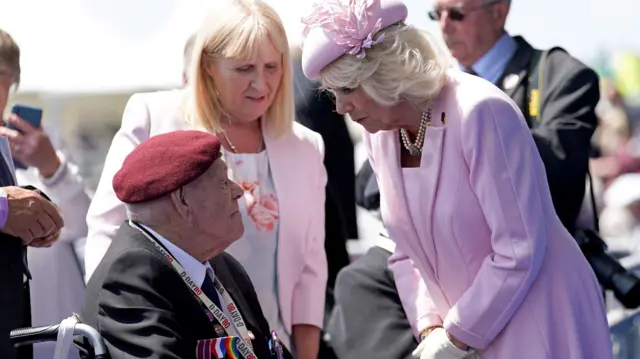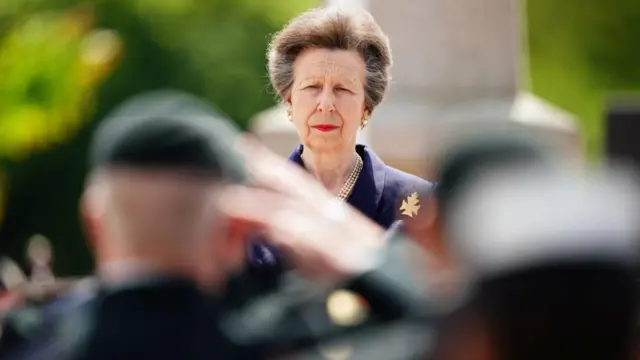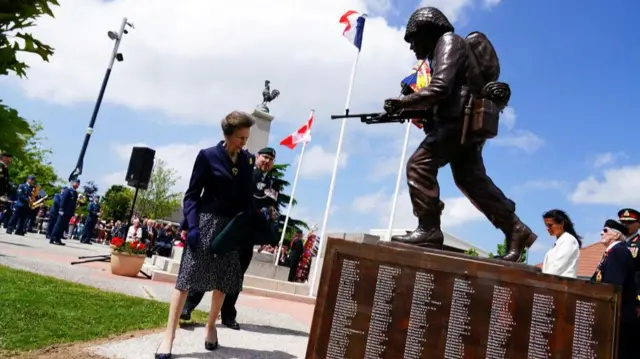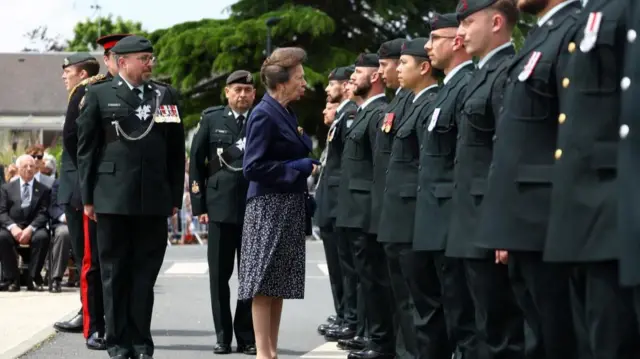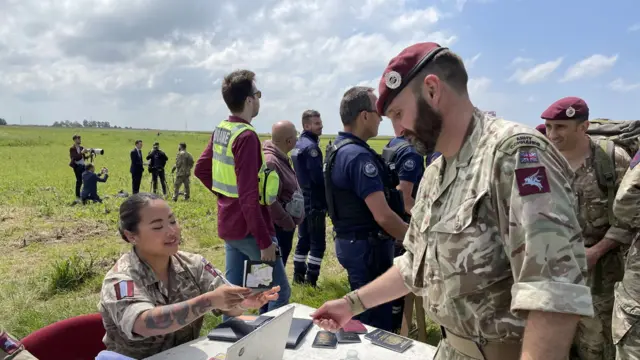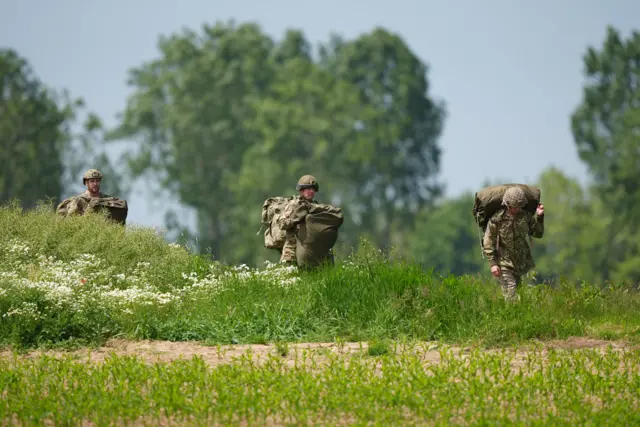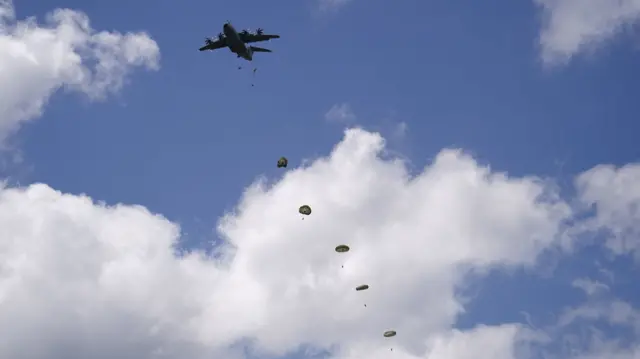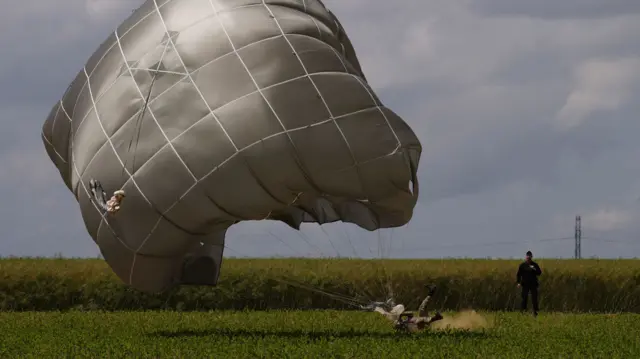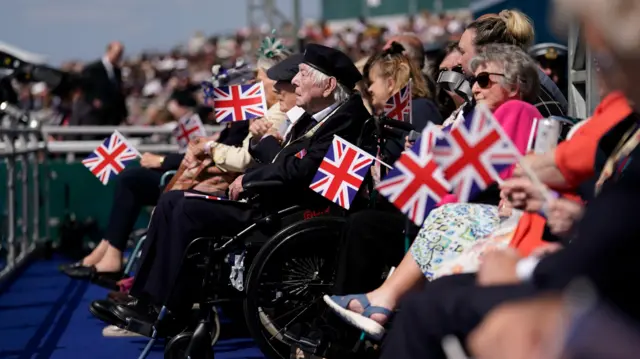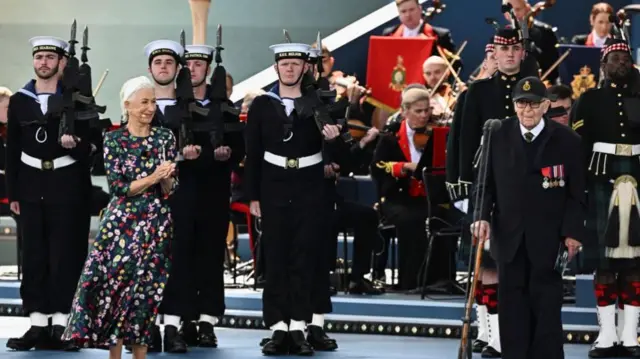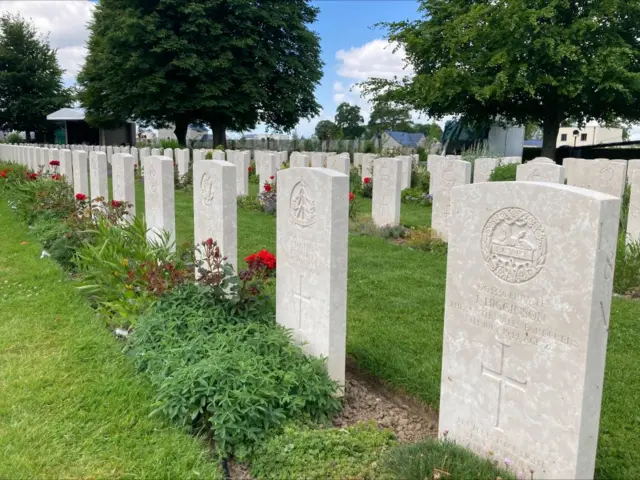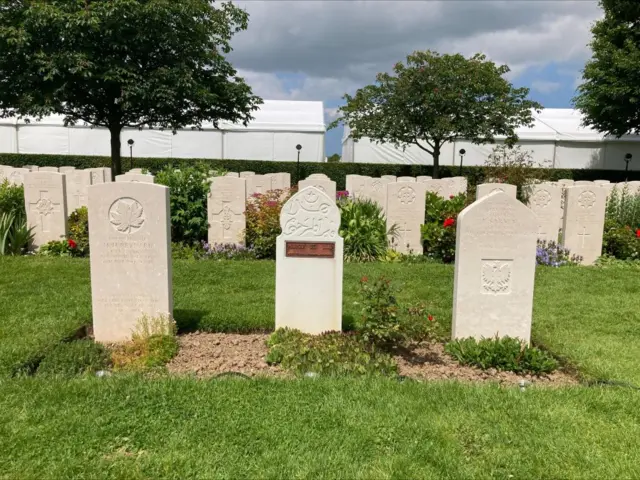In pictures: UK and French leaders meet D-Day veteranspublished at 17:23 BST 5 June 2024
As we've been reporting, world leaders have been taking part in several events to commemorate D-Day, as this year marks the 80th anniversary of Allied troops' landing in German-occupied France in 1944.
French President Emmanuel Macron, UK Prime Minister Rishi Sunak, Labour leader Sir Keir Starmer and the SNP's deputy leader Keith Brown could all be seen in attendance at remembrance events throughout the day.
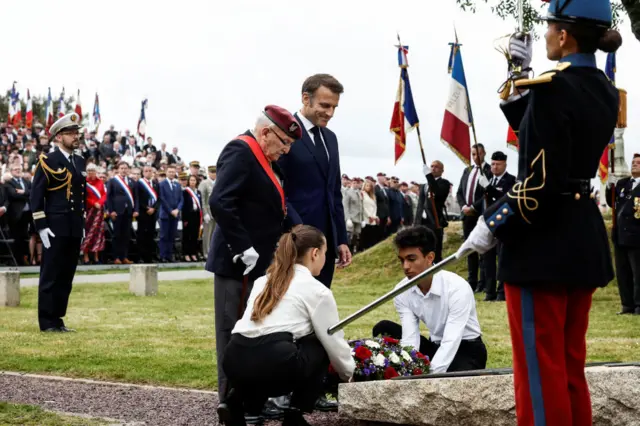 Image source, AFP
Image source, AFPFrench President Emmanuel Macron with 98-year-old Achille Muller, the last survivor of the Free French Forces, at a ceremony in Brittany to mark D-Day
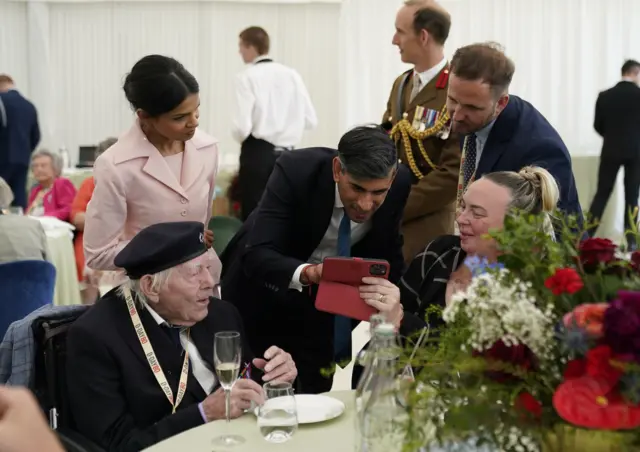 Image source, PA Media
Image source, PA MediaBritish Prime Minister Rishi Sunak and his wife Akshata Murty meet 98-year-old veteran Frank Cooper at a commemoration event in Portsmouth
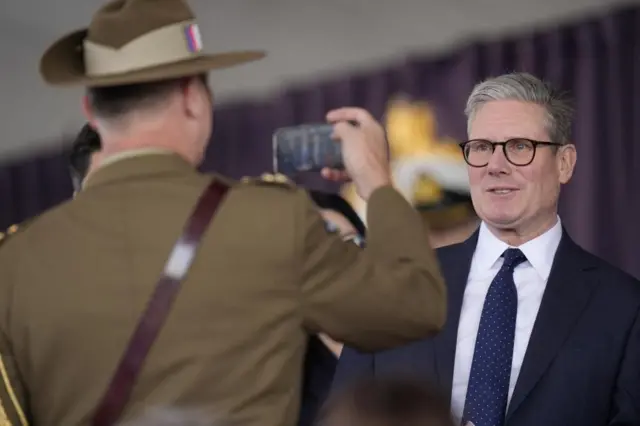 Image source, PA Media
Image source, PA MediaLabour leader Sir Keir Starmer was also at the event in Portsmouth
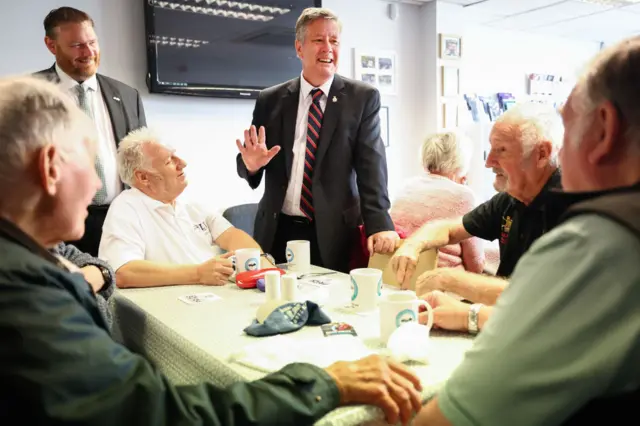 Image source, Getty Images
Image source, Getty ImagesIn Scotland, SNP deputy leader Keith Brown, joined the party's candidate for Midlothian Owen Thompson at Lothian Veterans Centre

